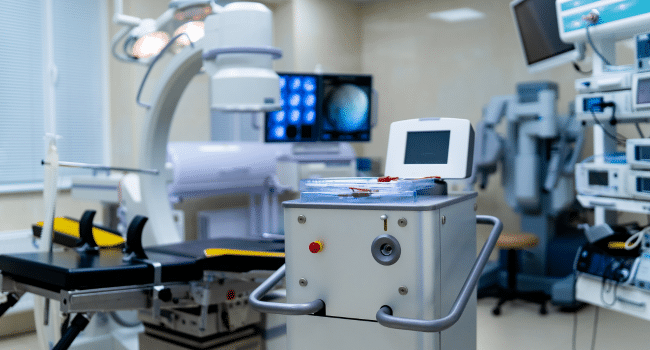Table of Contents
Traveling with medical devices can be a stressful experience, especially when it comes to getting through an airport security scanner. The idea of going through a scanner or explaining your device to a TSA officer can feel overwhelming, particularly if you’ve never done it before. The good news is, with the right preparation and a bit of confidence, flying with a medical device doesn’t have to be intimidating. Whether you rely on a pacemaker, insulin pump, oxygen tank, or other essential equipment, understanding the process ahead of time can make your journey smoother and less stressful.
Know Before You Go: Research Airline and TSA Policies
Before you even pack your bag, take time to review both TSA and airline-specific rules regarding your medical equipment. The Transportation Security Administration provides detailed guidance on how various devices are screened, what documentation is helpful, and what exemptions exist. Each airline may have slightly different requirements too—particularly when it comes to in-flight use of devices like CPAP machines or portable oxygen concentrators.
Print out or bookmark the relevant TSA pages and bring a copy of any manufacturer instructions for your device. If your equipment is battery-operated, check whether spare batteries are allowed in carry-on or must go in checked luggage. A little research upfront can save you a lot of time and hassle at the airport.
Pack Smart and Keep Essentials Accessible
When you’re traveling with medical equipment, it’s always best to keep everything in your carry-on rather than checked luggage. This ensures it stays with you at all times and is protected from potential damage, theft, or mishandling. If your device has parts that might raise questions—like wires, metal components, or liquids—organize them neatly in a clear, labeled pouch to make inspection easier.
Also, don’t forget to pack extra supplies in case of delays or emergencies. If you use disposable sensors, tubing, or batteries, bring spares. Keeping a small kit of wipes, gloves, and backup components in your personal item can also be helpful, especially during long flights or layovers.
Communicate Clearly with TSA Agents
TSA agents are trained to accommodate passengers with medical needs, but it helps to speak up clearly and confidently. When you arrive at the checkpoint, let an officer know right away that you’re traveling with a medical device. You can say something simple like, “I have a medical device that cannot go through the scanner. I need alternative screening.”
If you’re using a device that may trigger alarms—such as a pacemaker, insulin pump, or pain management implant—ask for a pat-down screening instead of going through the full-body scanner. TSA officers are required to offer private screening upon request, and you’re allowed to have a companion present if that makes you more comfortable.
Bring a Doctor’s Note (Even If It’s Not Required)
While TSA doesn’t officially require a doctor’s note, having one can make a big difference—especially if you’re traveling with less common or unfamiliar devices. A brief letter stating your medical condition, what equipment you rely on, and any special handling instructions can smooth over any questions from security or flight staff.
It doesn’t need to be long—just a short, signed statement on clinic letterhead will do. Store it in the same place as your medical ID, prescription information, or emergency contacts. Consider also wearing a medical alert bracelet or card in your wallet for added peace of mind.
Be Prepared for Manual Inspections
In some cases, your device or its components might still need to be swabbed or manually inspected. TSA officers use a variety of methods, including explosive trace detection, to ensure everyone’s safety. While it might feel intrusive, these procedures are routine and not targeted at you personally.
Remain calm, answer any questions honestly, and advocate for your comfort if needed. If you’re concerned about cleanliness or contamination during screening, ask officers to wear new gloves or change them in front of you. You’re allowed to make this request, and most agents will accommodate it without issue.
Onboard Considerations: In-Flight Use and Accessibility
Once you’re past security, the next step is making sure you’re comfortable during the flight itself. If your device requires power, confirm in advance whether your airline offers compatible outlets or if you need to bring a battery backup. For devices like portable oxygen concentrators, check if your model is FAA-approved and notify the airline at least 48 hours in advance.
Also, consider where you’ll be seated. If you need extra space, easier bathroom access, or assistance from flight attendants, ask during booking or check-in. And while you’re at it, pack a small note or checklist in case you need to explain how to use your device in an emergency situation.
Confidence Comes from Preparation
Flying with a medical device can feel daunting, but with the right planning, it’s entirely manageable. Start by knowing your rights and responsibilities, pack with intention, and communicate openly with airport staff. Most importantly, trust that you’re not alone—millions of travelers fly each year with pacemakers, pumps, monitors, and more.
By taking a few extra steps before your trip, you can avoid surprises at security and focus on the real purpose of your journey—whether it’s a family visit, vacation, or work trip. Travel is for everyone, and with a little preparation, your medical equipment doesn’t have to hold you back.
